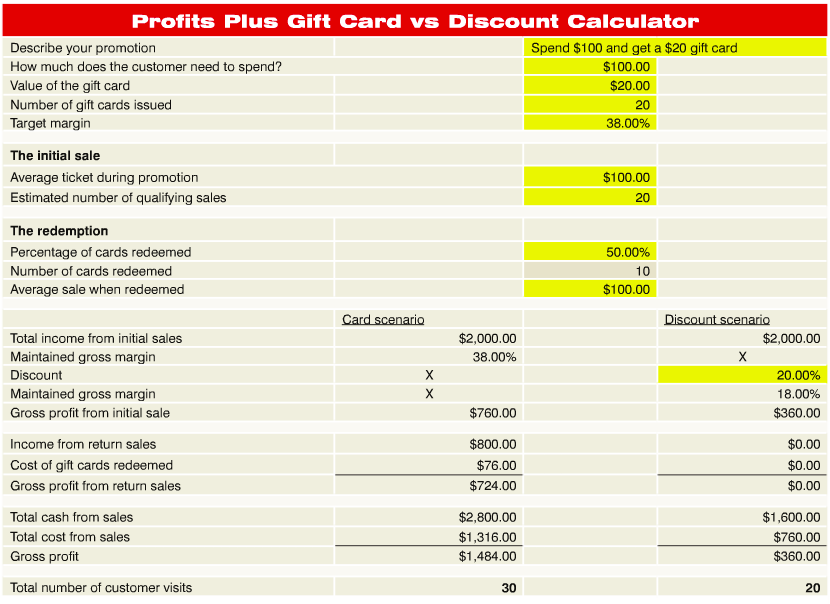An Alternative to Word of Mouth
By Tom Shay
When we visit with many dealers, we ask about their advertising; how much they allocate to an advertising budget; what they advertise; how they advertise; and the results they are achieving, or expect to achieve, from this expenditure of dollars.
Generally, we find a lack of planning, no budget for advertising, most of the advertising consisting of item and price, and no idea of whether or not the advertising is producing any results.
We also frequently hear, “We don’t advertise at all. We get most of our customers from ‘word of mouth’ or referrals.”
While we are waiting to find the dealer who can substantiate these claims, we respond by asking, “What if you could make ‘word of mouth’ happen?”
We would add to this question, “Have you thought about what that item and price advertising is doing to your business?”
While we will first look at the last question, what if we could solve all these issues?
What is item and price advertising doing to your business? The first and most obvious answer is this technique is diminishing the overall margin of your dealership. Think about that simple offering of a “20 percent off” newspaper advertisement.
Look at the bottom line of your business. As a percentage, is your net profit in excess of 20 percent? The obvious answer is, “no.” That means the 20 percent off sale has put this transaction into the negative profit region.
The unseen part of the 20 percent off sale is this is how you have first lured the new customer to your business – with a discount. If you start the relationship with a new customer by way of a discount, it is reasonable for the customer to believe, and expect, the relationship will continue with discounting.
It is not just with our example customer, but it will continue with everyone our example customer tells about their experience and the wonderful discount they get when they do business with your dealership.
Research has shown that the higher the discount offered, the less likely the customer is going to return. Sound odd? The reason behind this lack of returning is the customer has shown their true self – they are a price shopper. Their loyalty is to whatever business next gives them a discounted price.
Why would any business want to take the time, spend the money, and discount their prices to attract this person? Perhaps it is because they have not found an alternative.
Let’s look at an idea that could help alleviate these challenges. We have already looked at what discounting is doing to the bottom line; and we all know there is no magic solution to turning off the discounting.
You could offer to customers an alternative. Look at all the equipment you sell. One of the wonderful things about what you sell is that it has accessories to go with it – great reasons for an existing customer to return to shop with you again.
Change the advertising format from discounting to offering the customer a gift card with their purchase. Not every day; just like when you would offer discounts – on occasion – you will now do so with a gift card.
To make this work, you start by calculating the dollar amount of your average sale – how much does the average customer spend when shopping in your business.
For example: Perhaps the average dollar amount is $80. You will then offer a gift card when the customer spends $100. This is done because the average sale is already at $80, and you are pushing the customer to spend an extra $20. The awesome part of this is the $100 transaction is at your full margin. When the customer spends at least $100, you will then give them a $20 gift card. If your shop is maintaining a 38-percent gross margin, this gift card has a cost to you of $12.40.
What happens with the gift card? There are three possibilities:
1) The customer does nothing with it; they just don’t use it or they lose it. Surprisingly, this is our least favorite possibility, because we want that customer to return.
2) They give the card to someone else to use. This is an awesome choice, because they are now introducing a new customer to your dealership. This is better than the example of referral or word of mouth we initially mentioned, because this is a customer coming in ready to spend money. There is a side advantage to this new person coming in with the gift card that we will look at in just a moment.
3) The customer uses the gift card on a subsequent visit to your dealership. Now you have just boosted the foot traffic in your dealership.
If you give out 20 gift cards and only 50 percent are utilized, that would be 10 customer visits, new or existing customer, that you were otherwise not going to have visit your business.
The combination of not discounting your merchandise and increasing the number of customer visits to your business, not to mention the potential of the gift cards being given to new customers is going to have an amazing effect on your business. Let’s take a look at the numbers.
Doing business the old way, your 38-percent gross margin is now only 18 percent because of your 20 percent off advertisement. We all know you are not going to have a profitable bottom line with an 18 percent gross margin, but 20 sales with the average customer spending $80 is going to produce $1,600 in gross sales and a mere $360 is gross profit.
When the promotion is changed to using the gift card, you start with the same 20 sales, but with the requirement of a customer spending $100 to get the $20 gift card. This will mean you have $2,000 in gross sales. You have not discounted your prices, so that 38-percent gross margin produces $760 in gross profit. Already, you are $400 ahead.
You have 20 of the $20 gift cards floating around out there with the hope of the customer either spending them or giving them as gifts to someone. Let’s calculate on the low side and expect half of those $20 gift cards will be used. With a gross margin of 38 percent, your cost in the $20 gift card is $12.40. However, that cost occurs only when it is used. As this experiment has already been tried, we found because the customer, previous or new, spends more than the average customer. We think this is because they see the $20 gift card as “found money.”
When the 10 people come in and spend even as little as $20 over the $80 average ticket, you now have an additional $1,000 in sales. However, those 10 customers using a gift card mean you take in only $800.
When you total up the sales from the people using gift cards instead of your giving discounts, you now have 30 customer visits producing a total of $2,800 in sales. Your cost for these sales is $1,316, giving you a gross profit of $1,484, which is a big difference from the $360 you had with the 20 percent off sale.
The chart here provides a view of the math using the calculator from the ProfitsPlus.org website. This concept may be a bit radical from what the industry has done for years; however, the 10 extra customers and the $1,124 in extra gross profit is very persuasive to try something different as an alternative to word of mouth advertising.


Tom Shay of Profits Plus Solutions, Inc., is the fourth generation of his family to have owned a power equipment dealership. In addition to this column, he has written 12 books on business management, a book on vendor/dealer relations, and a college textbook on small business financials and business planning. He frequently speaks at trade shows and conferences for manufacturers and wholesalers. For more information, visit www.profitsplus.org.


